Hello everyone!
This post will introduce you to the optical module encapsulation types. I believe you are interested.
SFP/eSFP Optical Module
Small form-factor pluggable (SFP) optical modules are compact, hot-swappable, low-speed optical modules. They comply with the specifications defined in the multi-source agreement (MSA) and support synchronous optical network (SONET), Gigabit Ethernet (GE), fiber channel, and other communication standards.
Enhanced Small Form-Factor Pluggable Module (eSFP) is a compact, hot-swappable, low-speed optical module with the monitoring function. Compared with SFP optical modules, eSFP optical modules support monitoring of optical module alarms, temperature, and performance events.
The eSFP and SFP optical modules have the same functions and services. They can substitute for each other as long as they have the same optical power, sensitivity, and transmission distance.
The eSFP and SFP optical modules are classified into single-fiber unidirectional and single-fiber bidirectional optical modules. The transmission rate range of a single-fiber unidirectional optical module is 125 Mbit/s to 5 Gbit/s, and that of a single-fiber bidirectional optical module is 125 Mbit/s to 2.67 Gbit/s.
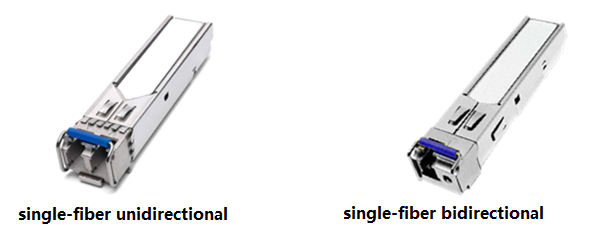
XFP/SFP+ Optical Module
A 10-GB small form-factor pluggable transceiver (XFP) optical module is a standard, hot-swappable, protocol-independent, high-speed optical module defined by industry organizations. It works at near-infrared wavelengths of 850 nm, 1310 nm, and 1550 nm, and supports multiple rates, such as 10GE, FIICON10G, SONET OC-192, STM-64, and OTU2.
The enhanced small form-factor pluggable (SFP+) is an enhanced version of the SFP that supports data rates up to 10 Gbit/s. An SFP+ optical module supports multiple rates, such as FC800, 10GE WAN, 10GE LAN, and OTU2.
Compared with the XFP optical module, the SFP+ optical module has similar rates but a smaller size. The SFP+ optical module has the same size and appearance with the SFP/SFP+ optical module.
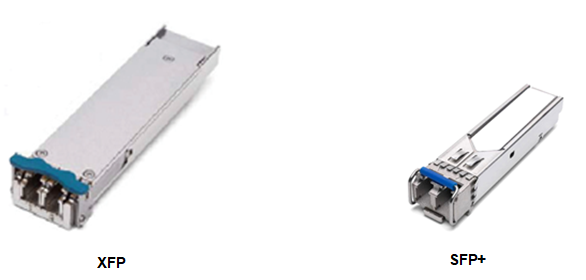
QSFP+/QSFP28 Optical Module
The enhanced quad small form-factor pluggable (QSFP+) optical module uses the LC/MPO optical connector and supports data rates up to 40 Gbit/s. It features low power consumption, small size, and high rates, and is mainly used in data center networks, campus networks, and metro networks. Currently, the main port types are SR4, LR4, ER4, and IR4.
QSFP28 (28G QSFP) is a 100G pluggable optical module that uses the LC/MPO connector. It is a next-generation optical module that features a small size, high port density, and low power consumption. Mainly used in 40G and 100G Ethernet applications, it uses four transmission channels of different rates to transmit data. Currently, the main port types are 100GBASE-SR4/LR4/SW4.
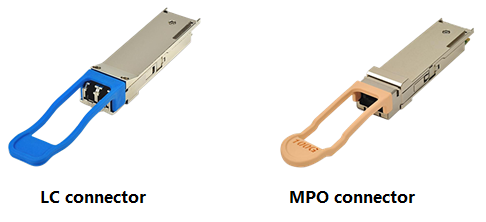
CXP/CXP2 Optical Module
The 100 Gbit/s eXtended-Capability Form-Factor Pluggable (CXP) is a 10-channel pluggable optical module with 10 built-in transmission channels, each of which runs at a rate of 10 Gbit/s. This module is mainly used to meet high-density requirements of data centers. It is usually used with parallel multimode optical fibers and supports a transmission distance of up to 100 m. The optical module uses the MPO interface. Currently, the main port type is 100GBASE-SR10.
The 300 Gbit/s eXtended-Capability Form-Factor Pluggable (CXP2) are used in cluster scenarios. All UCXCS boards in a service subrack must be equipped with CXP2 AOC optical fibers of the same length to ensure the minimum latency difference between services transmitted over different optical fibers in the subrack.
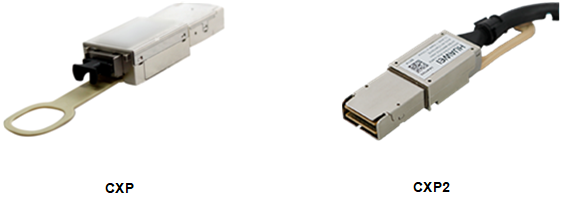
CFP/CFP2 Optical Module
The centum form-factor pluggable transceiver (CFP) is a 40G/100G pluggable optical module. It features high rates, multi-wavelength transmission, and a large size. Its main port types include 100GBASE-LR4/ER4/ZR4/SR10. 100G compact optical modules have been well developed. CFP2 and QSFP28 optical modules are commonly used.
The centum form-factor pluggable transceiver (CFP2) is a 100G pluggable optical module. The CFP2 optical module is usually used as a 100G Ethernet interconnection link. The main port type is 100GBASE-ER4/SR10. The transmission efficiency is higher than that of CFP optical modules. The CFP2 optical module is only half size of the CFP optical module, and the smaller size also makes it suitable for high-density cabling.
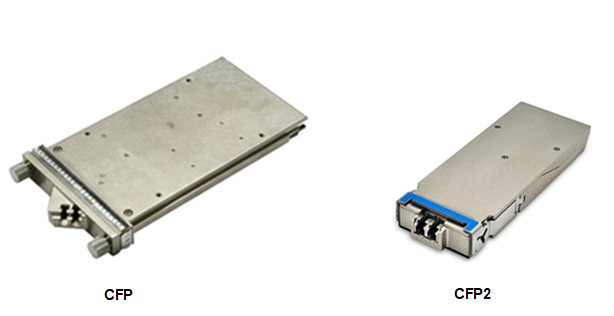
QSFP-DD
Quad Small Form-Factor Pluggable-Double Density (QSFP-DD) is a four-lane preferred encapsulation mode of 400G optical modules, supporting continuing growth in network bandwidth demand and data center traffic. QSFP-DD electrical ports employ eight lanes that operate up to 25 Gbit/s (NRZ modulation) or 50 Gbit/s (PAM4 modulation), providing solutions up to 200 Gbit/s or 400 Gbit/s aggregate.

That’s all. If you want to know more, please leave a message.
Thank you!

Leave a comment